Participants
Eight students have been selected to represent the University of Tennessee, Knoxville at the 2015 Posters at the Capitol event, February 25, 2015 in Nashville, TN.
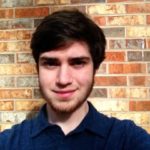
Student: Andrew Belt
Faculty Mentor: Mike Guidry and Jay Jay Billings
Project Title: Explicit Integration with GPU Acceleration for Large Kinetic Networks
Abstract: We demonstrate a computationally efficient implementation of recently-developed fast explicit kinetic integration algorithms. With Oak Ridge National Laboratory’s Titan supercomputer as a target and testing platform, we leverage its modern graphics processing unit (GPU) accelerators for massive parallelization of this algorithm. For a generic test case of a Type Ia supernova explosion having 150 isotopic species and 1604 reactions, this implementation on the GPU solves on the order of 100 networks in the same time as a single instance on a CPU. Effort is made to generalize this implementation to handle network sizes and connectivities typical of nuclear physics, atmospheric chemistry, combustion chemistry, and other applications in astrophysics through the use of a flexible application programming interface. Such an interface is also necessary for MPI-enabled applications across multiple computation nodes on supercomputers.
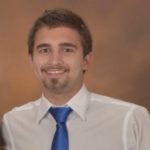 Student: Sheridan Brewer
Student: Sheridan Brewer
Faculty Mentor: Terry Hazen
Project Title: Co-Extraction of DNA and PLFA from Soil Samples using Bligh and Dyer PLFA Extraction and Modified Miller DNA Extraction
Abstract: Microbial communities are essential to the ecosystem functioning and human health. Nucleic acid and lipid analysis are the primary methods for analyzing microbial community structure and function. Currently, separate extraction methods are required for the extraction of lipids and DNA from environmental samples, requiring two samples. This is problematic for samples that are particularly heterogeneous and for semi-precious samples. This study developed a method for the co-extraction of DNA and lipids from the same sample using the phase separation of the Bligh and Dyer PLFA extraction method and a modified Miller DNA extraction method. The MoBio PowerSoil DNA extraction technique was used as comparison for DNA extraction. Four different soil types were sampled. DNA was extracted using both extraction methods. DNA concentrations were measured by Qubit. The 16s rRNA gene was amplified by PCR and sequenced using the Illumina MiSeq. To measure biases of these two DNA extraction techniques, several diversity analyses were performed using genetic sequences from the extracted DNA. No statistically significant differences were observed in α-diversity comparing samples extracted with the two methods from the same site. However, significant differences in β-diversity were observed when comparing based on site and extraction type. This indicates that both methods were efficient at extracting DNA from many different species but the types of species extracted differed. Our results demonstrate that DNA was able to be co-extracted with lipids using this method, and when compared to the PowerSoil extraction technique, abundances of bacterial population differed, but the overall α-diversity of the community between the two extraction techniques was statistically similar. This method may be applicable to a different samples allow a more representative determination of the activity and diversity of microbial communities.
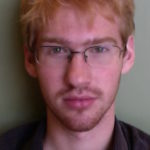 Student: Benjamin Brock
Student: Benjamin Brock
Faculty Mentor: Mike Guidry and Jay Jay Billings
Project Title: Explicit Reaction Network Solver with GPU Acceleration
Abstract: We demonstrate the first implementation of recently-developed explicit reaction network algorithms for graphics processing unit (GPU) accelerators. Taking as a generic test case a Type Ia supernova with an extremely stiff thermonuclear network having 150 isotopic species and 1604 reactions coupled to hydrodynamics using operator splitting, and using Oak Ridge National Laboratory’s Titan as a target and testing system, we demonstrate the capability to solve of order 100 realistic kinetic networks in parallel in the same time that standard implicit methods can solve a single such network on a CPU. This orders-of-magnitude decrease in compute time for solving systems of realistic kinetic networks implies that important coupled, multiphysics problems in various scientific and technical fields that were intractable, or could be simulated only with highly schematic kinetic networks, are now computationally feasible.
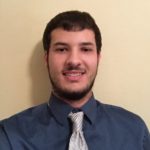 Student: James Ghawaly
Student: James Ghawaly
Faculty Mentors: Howard Hall
Project Title: Design and Fabrication of a Mobile Remote Control System for the Broad Area Search Bayesian Processor Aerial Platform
Abstract: Currently, there is a lack in capability in traditional approaches to broad area search operations to detect radiological material at standoff distances in a short amount of time. The Broad Area Search Bayesian Processor aims to advance the methods by which nuclear/radiological search operations are carried out by applying a Bayesian statistical search algorithm to the field of study. This algorithm cycles data from multiple sensors through a predict-sense-update process in order to arrive at a set of maximum-likelihood indicators that suggest the location(s), strength, and identification of nuclear/radiological sources. In support of this research effort, a remotely operated control system needed to be developed to operate the detector, GPS, and computations platform hosted on the unmanned aerial vehicle (UAV) from the ground. Further, a communications system with the capability of sending/receiving data without the use of radio and cellular towers needed to be included in the development of this control system to operate in remote locations. Using a variety of small electronics, the developed control system and software package allows for the user to operate radiation detectors attached to the UAV, and transmit and receive data for broad area search operations.
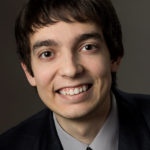 Student: Andrew Messing
Student: Andrew Messing
Faculty Mentor: Lonnie Love
Project Title: Big Area Additive Manufacturing
Abstract: 3D Printing, or Additive Manufacturing, is the process of adding material to grow a part rather than subtracting material, as is the case in typical machining or milling. Big Area Additive Manufacturing (BAAM) brings this technology to a commercial scale with unparalleled speed and accuracy. As opposed to more common desktop 3D Printers, BAAM prints an order of magnitude larger, two hundred times faster, and has a volumetric flow rate three times greater. The development of this project includes a complete redesign of current slicing software and 3D printing hardware. Improvements to the slicer include increased speed, new support generation algorithms, and several software solutions to challenges generated by scaling up the 3D printing process. Hardware improvements consist of a device for leveling the material after extrusion and a dispenser to apply a release agent for easy support material removal. As a partnership between Oak Ridge National Laboratory, Cincinnati Incorporated, and Local Motors, the World’s First 3D Printed Car came to life using the hardware and software of BAAM. This demonstration proved the ability to increase scaling of 3D printing without sacrificing speed while also contributing to the development of several new techniques for increased accuracy of part creation.
 Student: Emma Pugmire
Student: Emma Pugmire
Faculty Mentor: Erin Darby
Project Title: Lost in the Sands of Time: The Monumental Imperial Latin Inscription at ‘Ayn Gharandal
Abstract: The ‘Ayn Gharandal Archaeological Project has been excavating an ancient Roman military fort in southern Jordan since 2010. During the 2013 season one of the primary research objectives for the excavation of the fort’s gate was to identify when the fort was built and in what historical context. The excavation of the fort’s gate produced a monumental Latin foundation inscription that confirmed the foundation date and clarified the role of ‘Ayn Gharandal within the Roman empire. Because the inscription was left undisturbed in archaeological context for hundreds of years, it has shed great light on the date and context of the fort. Written on the inscription stone were the names of the Roman tetrarchy under Diocletian. Thus, we know now that this fort was built as part of Diocletian’s policies to strengthen the Roman lines, or borders, and it provides an absolute date for the construction of the fort. This poster will explain the careful excavation of this monumental find and what the inscription helps us understand about the larger imperial objectives of the tetrarchy on the Roman frontiers, particularly in the eastern provinces, as an attempt to rebuild the Roman Empire after the crisis of the Third Century.
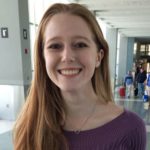 Student: Julie Rich
Student: Julie Rich
Faculty Mentor: Maitreyi Das
Project Title: Dominance of Old End Growth Is Inherited in Fission Yeast
Abstract: The fission yeast, Schizosaccharomyces pombe, is an excellent model system for the study of eukaryotic cell morphology due to its well-defined cell shape, amenable genetics, and ease in imaging. After cell division, a fission yeast cell has an old end that persists from the previous generation, and a new end derived from the division site. Immediately after cell division, the old end resumes growth. New growth initiates only once the cell attains a certain size by a phenomenon called NETO (New End Take-Off). Cdc42, a small GTPase, is the primary regulator of cell growth in eukaryotes. Our recent studies show that in fission yeast the two ends compete for active Cdc42; the old end is the dominant end and wins initially. What endows the old end with dominance is unknown. To address this question, we analyzed the unique growth patterns of mutants with lower levels of active Cdc42, and therefore increased competition between the ends. Our data suggests that the old end is dominant only if it grew in the previous generation. This indicates that there exists a heritable memory of growth which determines dominance. Future studies aim to understand the molecular details and regulation of this growth dominance.
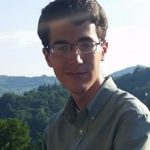 Student: Louis Varriano
Student: Louis Varriano
Faculty Mentor: Yuri Kamyshkov
Project Title: Potential Mirror Matter Effect on the Neutron Lifetime
Abstract: A precise measurement of the neutron lifetime is important for Big Bang nucleosynthesis calculations. The history of neutron lifetime measurements has demonstrated impressive continuous improvements of the experimental techniques and of the accuracy. However, two most precise recent measurements performed by different techniques differ by about 3 standard deviations. This difference of 9.2 seconds can possibly be resolved by future experiments, but it also can lead to an interpretation of a new effect. This research attempts to explain this difference by a mirror matter as dark matter effect present in these experiments. Both mirror matter and regular matter can have similar properties and self-interactions and can interact gravitationally, thus providing evidence of the existence of dark matter. However mirror matter does not couple to the regular matter by our other Standard Model interactions. Additional interactions can exist, providing mixing of regular matter neutral states, like the neutron, with mirror components with small probability. This work first estimates the density of mirror matter particles needed to explain the difference between measurements of the neutron lifetime. Working under a model that describes an accumulation of mirror matter particles within the Earth, this resulting density is then evaluated for its reasonableness.